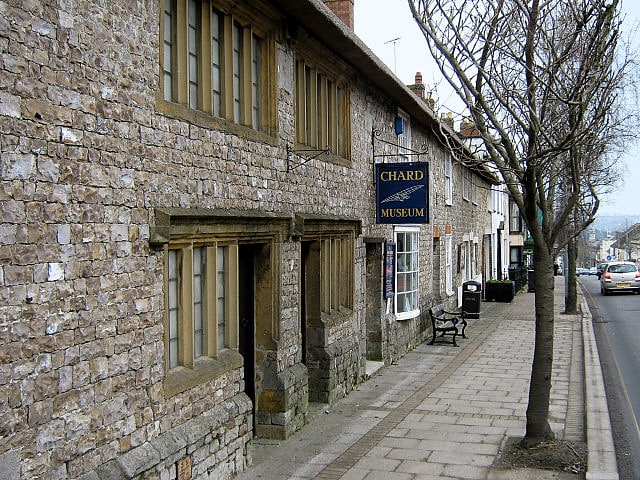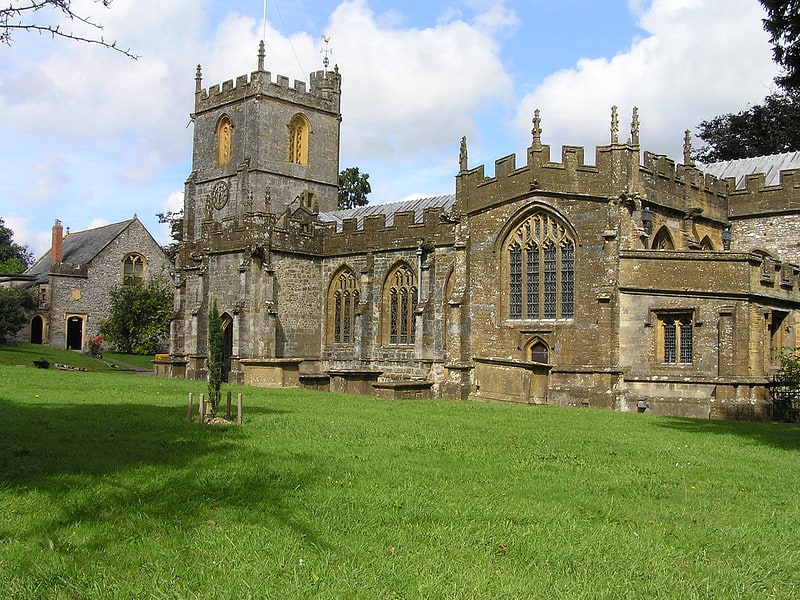Discover 6 hidden attractions, cool sights, and unusual things to do in Chard (United Kingdom). Don't miss out on these must-see attractions: Forde Abbey, Chard Museum, and St. Mary's Church. Also, be sure to include Chard Museum and Heritage Centre in your itinerary.
Below, you can find the list of the most amazing places you should visit in Chard (England).
Table of Contents
Forde Abbey

Monastery in England. Forde Abbey is a privately owned former Cistercian monastery in Dorset, England, with a postal address in Chard, Somerset. The house and gardens are run as a tourist attraction while the 1,600-acre estate is farmed to provide additional revenue. Forde Abbey is a Grade I listed building.[1]
Address: Forde Abbey Estate, TA20 4LU Chard
Chard Museum

Museum in Chard, England. Chard Museum is a small local museum in Chard, Somerset, England. It opened in 1970, in a converted 16th century listed building, with collections of exhibits about local history and displays related to the lives of notable local residents.[2]
St. Mary's Church

The Anglican Church of St Mary the Virgin in Chard, Somerset, England dates from the late 11th century and was rebuilt in the 15th century. It has been designated as a Grade I listed building. Due to the effects of a leak in the roof it was added to the Heritage at Risk Register in 2013.
The Perpendicular cruciform church has an aisled nave and north and south porches. The north transept has an oak roof, which was refurbished in 1975. The south transept contains the organ, built in 1883. The church used to have galleries. The Fawcus chapel in the north aisle, dedicated to a local physician, includes the Brewer Memorial.
The west tower was built between 1505 and 1520 and contains a peal of eight bells, of which two were made in the 1790s by Thomas Bilbie of the Bilbie family in Cullompton. The three-stage tower has moulded string courses and an angle stair turret in the north-west corner. The clock chimes each quarter-hour in a setting often known as Chard Chimes.
There is a church room built in 1827.
The parish is part of the benefice of Chard, St. Mary with Combe St Nicholas, Wambrook and Whitestaunton within the deanery of Crewkerne and Ilminster.[3]
Address: Forton Rd, TA20 2HJ Chard
Chard Museum and Heritage Centre

Specialty museum, Museum
Address: Godworthy House High Street, TA20 1QB Chard
Chard School

School in Chard, England. Chard School is a coeducational independent school for children ages 4 to 11 located in the town of Chard in the English county of Somerset.
The school is located on the site of the former Chard Grammar School.[4]
Fore Street

Street in Chard, England. Fore Street in Chard, Somerset, England was built in the late 16th and early 17th century, following a fire which destroyed much of the town in 1577.
Fore Street is a main shopping street and thoroughfare with open water channels on either side. Local folklore claims that one stream eventually flows into the Bristol Channel and the other reaches the English Channel. This situation changed when the tributary of the Axe was diverted into the Isle; the gutter in Holyrood Street, though, still flows into the River Axe and therefore it is still true it lies on the watershed and that two gutters eventually drain into the Bristol Channel and the English Channel.
Numbers 7A,7B,9,11,13 & 13A Waterloo House and Manor Court House have been designated as Grade I listed buildings. They are now on the Heritage at Risk Register. The Hamstone Waterloo House and Manor Court House were built in the late 16th or early 17th century. The history of the buildings is complex and not fully understood, although it is known that it was used as a court house at various periods. Worries about the condition of the buildings, and others in the row from 7 to 13 Fore Street, and the need for their preservation. has been expressed throughout the 20th century.
In 2010 when the Manor Court House, where Charles I signed a peace declaration during the English Civil War, was added to the Heritage at Risk Register one local trader complained that not enough was being done to maintain and conserve the building. Waterloo Court was built in the 16th century as a house, it has since been converted into a shop with a flat above it.
In 1834 the Guildhall was built with a doric portico with a double row of Tuscan columns along the front. It was built to replace an earlier 16th century guildhall and now serves as the town hall.
Chard Museum is housed in a 16th-century thatched building which was originally four cottages. The building was converted and restored for use as a museum in 1970, and later incorporated the building next door which had been the New Inn public house. It houses collections of exhibits about local history and displays related to the lives of notable local residents.
The L shaped school building was built in 1583 as a private house and converted into Chard Grammar School in 1671. It was damaged in the fire if 1727. It is a Grade II* listed building. In 1890 it became a boarding school and then in 1972 a preparatory school. Monmouth House, which was built between 1770 and 1790, and the 16th century chapel, are also now part of the school.
Pubs include the Dolphin Inn, which was built in 1840 and the George Hotel which was constructed in the late 18th century. The Weslyan Methodist Chapel was built in 1895 from Flemish bond brick.
The branch of Lloyds Bank was built as a house on the site of the Chard Arms Hotel in 1849. The branch of National Westminster Bank was two houses when it was constructed around 1820. In 1938 a bomb proof bunker was built behind the branch of the Westminster Bank. During World War II it was used to hold duplicate copies of the bank records in case its headquarters in London was destroyed. It was also used to store the emergency bank note supply of the Bank of England. There has also been speculation that the Crown Jewels were also stored there, however this has never been confirmed.
In 1991 the town council commissioned bronze sculpture from Neville Gabie which were erected in Fore Street they are entitled Ball and Whirl. An album detailing the work and its commissioning is held by the Chard Museum.[5]